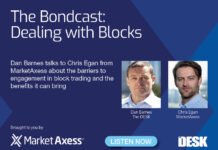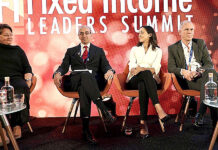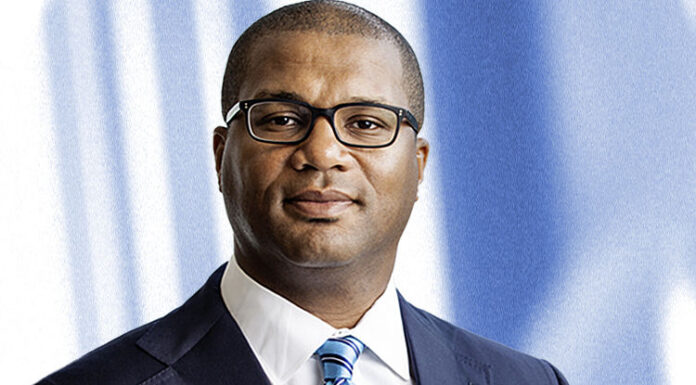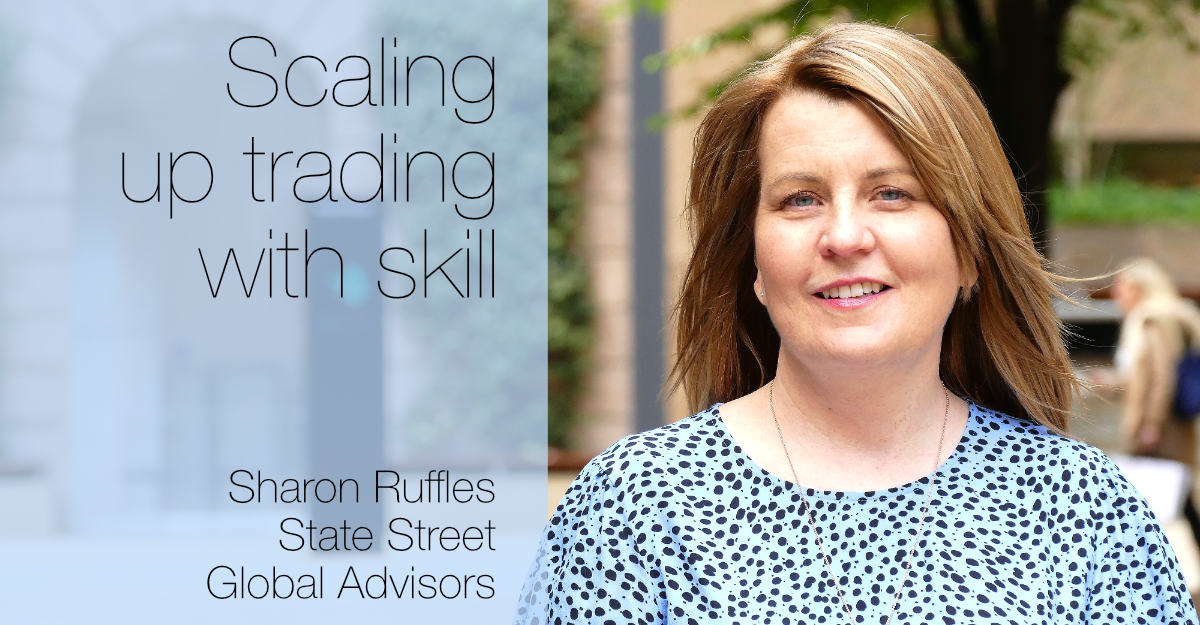
Sharon Ruffles, head of fixed income trading, EMEA at State Street Global Advisors, outlines her ongoing strategy to expand the scale, capabilities and reach of her team.
Which markets do your teams cover and what are the key elements to trading them well?
There are five traders on our EMEA fixed income trading desk including myself, trading all asset classes under the fixed income banner. I manage a centralised trading desk meaning all EMEA fixed income trades will be routed to our desk and we can also receive orders from all other SSGA locations around the globe. The EMEA trading hub model is replicated in our North American office in Boston and we have a trader/PM model in Singapore giving SSGA a global trading presence.
Every trader on my team has a dedicated specialism and asset class that they focus on and they also have the ability to trade the full range of FI markets. This can be particularly useful on busy and volatile days. My role as head of the desk is one of oversight while also trading all fixed income markets; this allows me to support the desk during busy periods.
Our FI book of business continues to grow year on year, and our trading volumes continue to increase. The EM book has seen some significant growth over the last few years, particularly in local currency EM, but also more recently in hard currency. I have two dedicated traders covering the EM book of business from London who are able to access and execute trades across all time zones. We often have very early starts to our day to trade large flows.
What is your approach to building out APAC trading?
The inclusion of China into fixed income benchmarks is increasing the proportion of portfolio securities in that region. Delegating portfolio management of Asian emerging markets securities from SSGA UK to SSGA Singapore will allow us to manage those securities in the local time zone which, we believe, will be beneficial to our clients. Trades will be executed in the region or by one of SSGA’s global trading desks.
While we have had dedicated portfolio management teams in Singapore, managing Asian fixed income markets, since 2005, we are looking to add to the team there to support the expansion of our capabilities.
How do you build new trading protocols into your workflows?
It’s an evolution we constantly strive to embrace. You keep a trading desk head-count stable by making use of all of the different trading protocols that are out there. The all-to-all model has worked extremely well for us for the type of business that we trade. Being an index manager means we are rebalancing all of our index funds on the last business day of the month. We can produce an incredible number of trades and our volume can go to 10 times our average daily volume (ADV) on that one day. So, our processes need to be scalable, and they have to cope with that explosion of volume.
Historically we might have sent an RFQ list out to six counterparties, then wait for them to respond, and if none had the liquidity we would send the list to another six, and then another, until eventually we found that liquidity. All-to-all allows us to just do that in one hit and to spread the net wider to capture liquidity from other buy-side and alternative market participants.
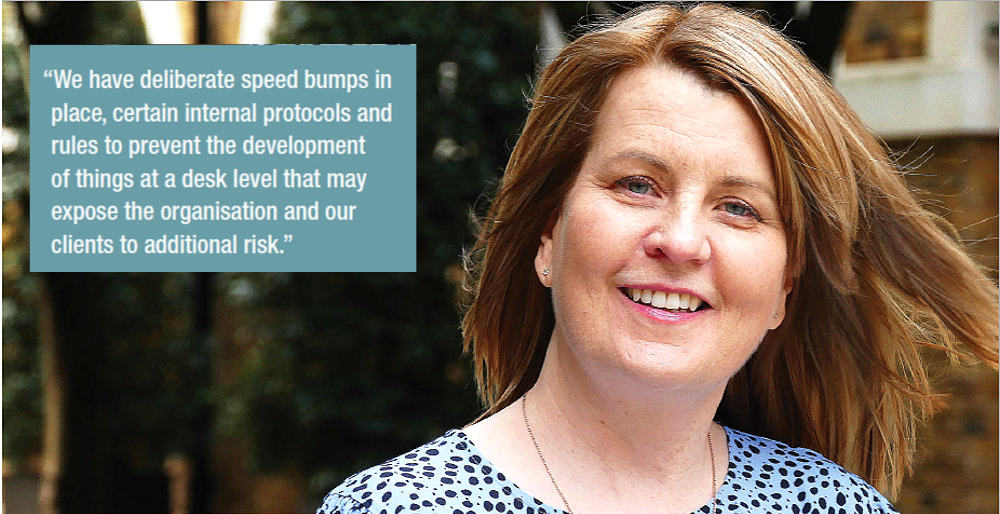
Thinking about the size of the trades we are doing and the footprint that we might be leaving, these are not market sensitive trades, so all-to-all works extremely well for us. But it does not fit all trades. We are very thoughtful about the size and liquidity, and the average daily volume of the particular asset that we are trading, so we take a pragmatic approach and assess each trade and flow on its own merits.
We have developed an internal pricing model that allows us to rest orders in a platform, and then wait for the liquidity to come to the market, making us a price maker rather than a price taker. This works really well for illiquid, hard-currency emerging market bonds, where a trader can wait for days or weeks for that liquidity to come, then when it does if you are not quick enough it’s priced and gone by the time you have scratched your head and thought, what price should I put on this?
What we have developed allows us to look at our priority list on a daily basis, set the pricing parameters, then get it ready to auto-respond when that enquiry comes to market. Given that the majority of these bonds are illiquid, from a transaction cost analysis (TCA) perspective, it can be extremely beneficial to have this technology.
Have you had to show quantifiable results to get that developed?
Trading at SSGA is an integral part of the global investment process so we continue to develop portfolio management and trading protocols that are complimentary and beneficial to the entire investment process and result for the end client.
We look at the skill-sets that we have in our teams, because often if you can kickstart something internally, with a small amount of development you can bring other teams onboard to help develop the idea further.
We have deliberate speed bumps in place, certain internal protocols and rules to prevent the development of things at a desk level that may expose the organisation and our clients to additional risk. IT needs to be part of the process and the right and correct protocols need to be followed. It’s a real collaboration between trading, portfolio management and bringing IT in to support and make sure that what is being developed, is being developed in a way that can be controlled and maintained.
That suggests you are viewing high and low touch execution as part of the same desk?
If you are trading a particular asset class it is useful to understand the way that your counterparties respond to your low touch, and your smaller size business. If you understand that, then you can identify the strengths and weaknesses in your counterparties. That’s a really good way of working out where you need to focus on partnerships, for high touch. Also, if I split my desk low touch/high touch I would have some incredibly busy low touch traders, and some incredibly relaxed high touch traders. Finally, while we have asset class specialism within the team, we are all expected to jump in everywhere to cover every asset class. This allows me to see the challenges that the traders are facing from the market, from our own technology and from our own capabilities.
It also means that all the traders can and do dip in and out of each other’s asset classes. So, we have a ‘go to’ person for each particular market but on a really busy day you need to deploy the troops as required.
How is the management structure configured?
I head up EMEA fixed income trading and we have an EMEA head of equity, currency and futures. That model is replicated in North America and APAC.
How does cross pollination of ideas work between teams?
As a global asset manager, and from a trading perspective, we have a very close interaction with our colleagues in Boston and Singapore. Our current order management system (OMS) allows us to electronically pass our trades across time zones where appropriate, and as we transition to Charles River we are building on and improving those capabilities. Our close interaction with the portfolio management team means we are an integral part of the investment process and will discuss fully the strategy for execution across all teams globally.
How would you characterise your strategic priorities?
The transition from the current OMS to Charles River is first and foremost in my mind, along with the expansion of the trading capability in APAC in Singapore. Then further development of scalable tools or trading protocols that allow us to become more efficient. We are constantly pushing the envelope on execution, with things like the auto responder. And we will continue to develop that and other protocols that will improve our efficiency.
If you are looking at illiquid bonds, then typically there is less data available, so pricing might be more challenging to assess; is it not harder to build an auto responder for bonds which only price once every three weeks?
Yes, that’s why we look at it on a daily and intraday basis. We take in all relevant data pertaining to that particular bond such as benchmark prices, our previous ownership of these bonds, where correlated/linked bonds are being priced and information from trading platforms such as missed or passed trades. Streaming prices, inventory and axes can all feed into the model.
What are the biggest challenges your traders face in the market?
It’s typically liquidity and asset class peculiarities. For example, there are close to 28 different local markets that we cover in emerging markets. Not all of those trade the same; some can trade electronically, others are purely voice trading only. New markets like China have meant that we have had to develop trading protocols and processes that allow us to be scalable, efficient and to meet reporting deadlines, while also keeping trading costs low. A lot of work went into, and continues to go into, making China and other markets more efficient to trade.
What triage system do you use for working out what new services and counterparts are useful, a waste of time, or potentially interesting?
First, I ask how it fits into my workflow. What benefit does it bring to me and to the team, and to the end client? If I want to engage with any vendor, there is going to be an element of cost involved in terms of my legal team being involved and my IT team being involved.
I have to dedicate a fair amount of my own time, and my traders’ time to testing, and planning. So it really has to be a value-add to the processes that we already have.
I would say any new players in the market have got a tough gig because they are up against providers that have been around for a long time. All-to-all didn’t pop up out of nowhere, it was because the buy side said “we need access to more liquidity”. Trading platforms are more likely to develop new functionality when asset managers have similar requirements. So, when somebody new comes along with something that looks interesting, it is rare but hugely exciting.
Which market making and broker relationships do you think you are going to need in the future and are they going to be different to those you need today?
They have been massively evolving over the last few years. Some of our big counterparties used to be like supermarkets, trading all products. They now tend to be more niche in the products they trade. We should be having close conversations with our counterparties to understand how their business is moving, and where their priorities are shifting. They shift a lot more than they used to. From a buy-side perspective it’s important that we understand them as much as they understand us.
Separately the expansion of our emerging market book of business takes us across the world in terms of wanting to have those big relationships with counterparties that we always have had, that trade those markets. But, also developing domestic relationships as well, so that we are getting local knowledge and that local liquidity.
What is your view of transaction cost analysis and execution quality analysis in terms of its usefulness and its maturity?
We have an internal team dedicated to transaction cost analysis which works fantastically for our equity and currency business. Fixed income is not so easy, as the accuracy and availability of pricing data is not as robust, so you can’t really apply the same methodology. From a trade analysis perspective, we usually assess by portfolio as well as bond-by-bond. We work pre-trade to assess what the execution is likely to cost us, and then look at it post-trade to see what the execution actually did cost us.
That can work if you have a benchmark you are measuring against. But, when you try to evaluate transaction cost analysis versus all sorts of different measures it becomes very complicated in the fixed income markets. Many of the questions that are asked around measurement are so subjective, and you need an awful lot of good data to be able to measure that effectively.
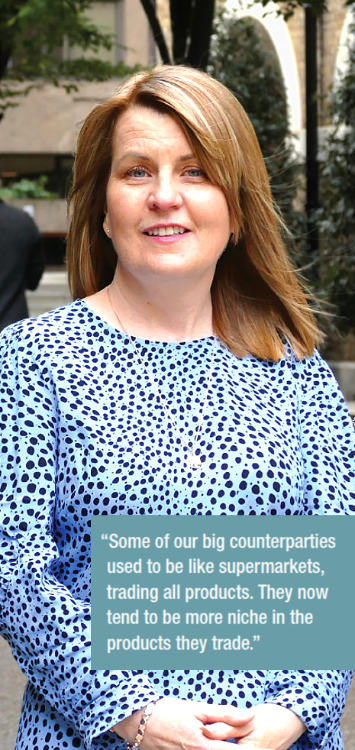 How do you evaluate that reason for holding a trade, or the reason behind waiting?
How do you evaluate that reason for holding a trade, or the reason behind waiting?
Pre- and post-trade it helps us then to think about our style of execution going forward, what is costing us and what is not costing us. In EM for example, a lot of the cost can come from the currency, so we make sure that we are either embedding the currency transaction in the bond transaction, or simultaneously trade the bond with the currency, minimising drag from the currency cost.
Without standardisation in fixed income TCA measurements, and without frequent and accurate pricing data, TCA can be very subjective and so a more holistic execution analysis is a possibly a better measure.
Can you see how an EMS can add value to fixed income trading today?
We are in the process of evaluating EMS providers. I would like to see better access to reliable and accurate pricing data in fixed income. I think when we have that, then an EMS imbedded within your OMS will become a very useful tool. Being able to combine your internal historical and predictive pricing data with external sources of data will allow us to better evidence that holistic view of execution analysis.
BIOGRAPHY:
Sharon Ruffles is the head of fixed income trading, EMEA at State Street Global Advisors. She has led the fixed income trading team, which is responsible for trading all fixed Income products, since 2004.
She began her career in investment management in 1986 as an investment portfolio analyst with Credit Suisse First Boston, London. In 1994, she joined the fixed income trading desk at Credit Suisse Asset Management where she traded all fixed income products and foreign exchange. Her primary responsibility was for monitoring and trading Scandinavian and Emerging Bond Markets. In 2000, Sharon joined Gartmore Investment Management as a senior fixed income trader.
Since joining SSGA she has grown the team, expanding its capabilities and members, from two to five dedicated fixed income traders.
In addition to trade execution and oversight, Ruffles is a member of the Investment Association Fixed Income Traders Committee and other industry forums where she actively participates in industry-wide market structure and regulatory discussions and initiatives.
©Markets Media Europe 2021
©Markets Media Europe 2025

